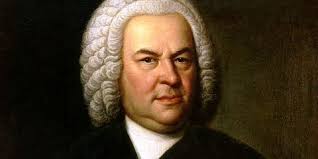Johann Sebastian Bach’s Flute Sonata in B minor, BWV 1030, stands as one of the most profound and expressive chamber works ever composed for the transverse flute. Written during the Baroque era, this sonata exemplifies Bach’s mastery of counterpoint, melodic invention, and emotional depth. It is a cornerstone of the flute repertoire and a testament to Bach’s deep understanding of the instrument’s capabilities.
Origins and Composition
The Flute Sonata in B minor was likely composed between 1736 and 1741, during Bach’s tenure as Thomaskantor in Leipzig. At the time, Bach was deeply involved with the Collegium Musicum, a musical society of professional and amateur musicians that often performed at Café Zimmermann, a local coffeehouse. These performances allowed Bach to explore instrumental genres more freely than in his church compositions.
Although the exact date of composition remains uncertain, the sonata was probably written for a skilled flutist, possibly one of the visiting virtuosos who played with the Collegium Musicum, or even for Bach’s son, Carl Philipp Emanuel Bach, a talented keyboardist and composer in his own right.
Interestingly, there exists an earlier version of this work in the key of G minor, transposed and adapted for different instruments. This has led some scholars to believe that the piece may have originated as a work for another instrument before Bach reworked it for flute and obbligato harpsichord.
Structure and Style
Unlike many other Baroque sonatas where the keyboard serves merely as continuo accompaniment, the Flute Sonata in B minor features a fully written-out harpsichord part. This makes the piece a true duo sonata, with both instruments engaging in intricate dialogue and sharing thematic material.
The sonata is structured in three movements:
- Andante – The opening movement is lyrical and flowing, showcasing Bach’s gift for melodic development and contrapuntal interplay. The flute and harpsichord exchange motifs and mirror each other in a graceful, yet emotionally rich texture.
- Largo e dolce – This movement shifts to the relative key of D major and exudes a serene, introspective quality. The flute line sings tenderly above a delicate harpsichord accompaniment, creating a sense of intimacy and expressive nuance.
- Presto – The final movement returns to B minor with a vivacious fugue-like structure. Both instruments engage in a dazzling display of virtuosity and rhythmic drive, ending the sonata with exuberant energy and brilliance.
Legacy and Significance
The Flute Sonata in B minor remains one of the most beloved and frequently performed flute works in the classical repertoire. It not only showcases the expressive range of the flute but also exemplifies Bach’s unique ability to combine intellectual rigor with deep emotional resonance.
Moreover, the sonata is a valuable example of the evolving role of the keyboard in chamber music. The obbligato harpsichord part foreshadows later developments in keyboard writing and highlights the increasing prominence of the harpsichord as a soloistic instrument during the late Baroque period.
Conclusion
Johann Sebastian Bach’s Flute Sonata in B minor, BWV 1030, is a masterpiece of Baroque chamber music. Its expressive depth, formal elegance, and technical demands make it a work of enduring fascination for performers and listeners alike. Whether heard in an intimate recital or a concert hall, this sonata continues to captivate audiences with its timeless beauty and sophisticated artistry.


Comments are closed